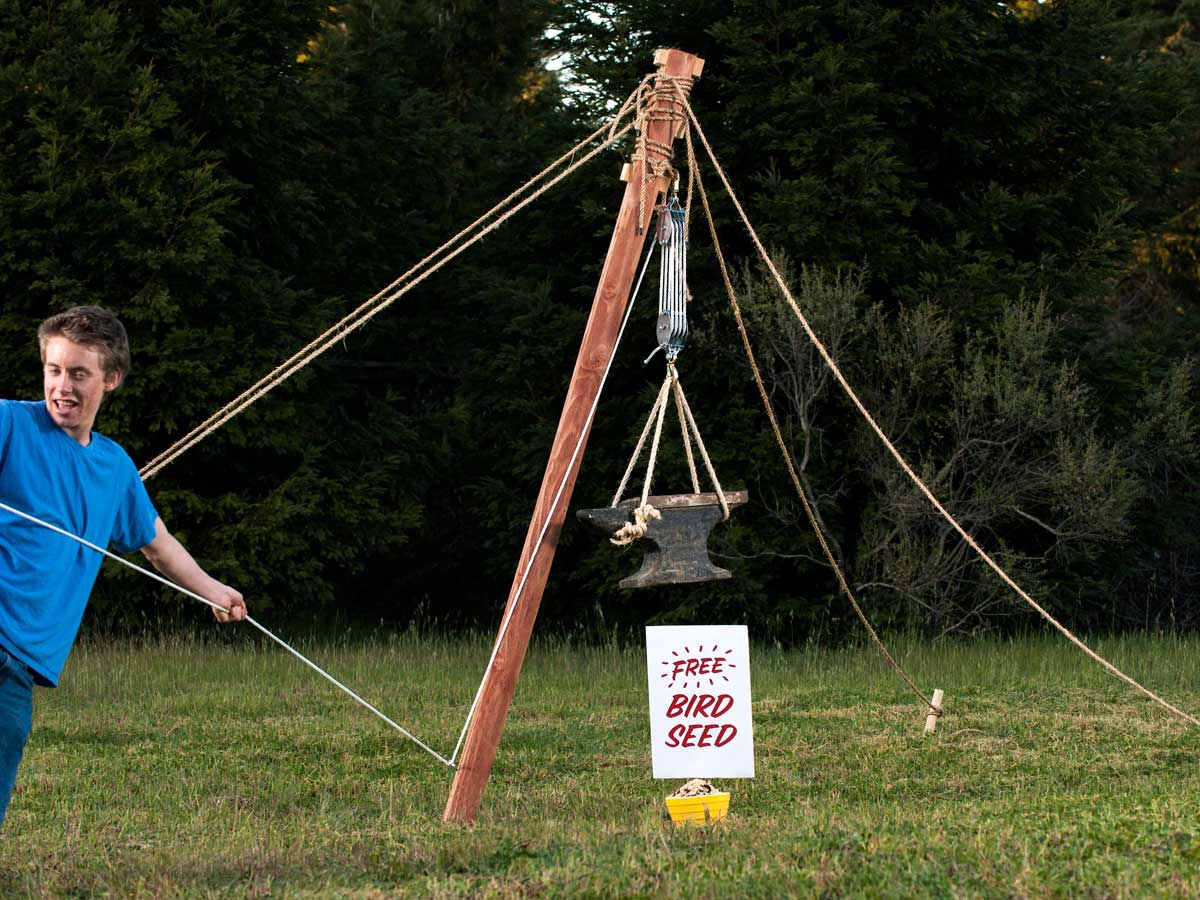In antiquity, the only way to raise a heavy object was to put a rope on it, climb a ladder, and pull, or if you had enough time, build a ramp.
The ancient Egyptians much favored the ramp technique, and the Great Pyramids show that very worthy things could be built this way. Later the Egyptians came up with better ways to hoist stuff. Around 1500 B.C., Nile farmers invented a counterbalanced lever called a shadouf or swape, to use in irrigating their crops. With a shadouf, buckets of water or baskets of rocks could be lifted to a height of nearly 15 feet.
But 15 feet was more or less the limit for machine-assisted lifting for 1,000 years, until the Greeks mounted a pulley on the end of a pole and invented the construction crane in the 6th century B.C. They soon realized that with such a device, the sky’s the limit.
Who engineered those first cranes? Their names are lost; only their marks remain on the stones of the classical Greek temples. It is through Heron (Hero) of Alexandria (c. A.D. 10–70), a Greek engineer living in Roman Egypt, that we first become well acquainted with the ancient construction cranes.
Some modern historians put Heron’s scientific contributions in the same league as those of Pythagoras, Archimedes, and Euclid. A polymath of sweeping scope, Heron wrote a lot of books on subjects ranging from classical mathematics and fluid dynamics to catapult construction.
The cranes Heron describes were simple affairs, but they were world changers. Dependable and efficient lifters, they made it possible to construct buildings taller than two stories without ramps. Heron’s original manuscript, a tome called Mechanics or The Elevator, was lost. Luckily, Arabic translations survived, with the no-nonsense title Heron’s Book About the Lifting of Heavy Things.
Another really big idea in Heron’s book is the force-amplifying block and tackle, the compound pulley rig (credited to Archimedes in the 3rd century B.C.) that allows a person to lift heavy objects by trading displacement for force. As the diagram shows, by using a single block and tackle (one pulley in the fixed block and one in the moving block) you can lift a weight of x pounds to a height of y feet by applying a force of only half of x (x/2), if you’re willing to pull on the rope for 2y feet. That’s a 2:1 mechanical advantage. This may be well known now, but in ancient Greece, it was an incredible insight.
Heron’s ancient crane is a guyed derrick with a windlass, and it was the standard tool in building construction for a millennium and a half, until more complex cranes were developed in the Middle Ages.
That ancient, one-masted crane lives on today in an incarnation known as the gin pole. The gin pole is the aspirin of construction equipment; it’s been around a long time and it still works great. Used mostly for vertical lifts, it can hoist a load up to 50 feet. A good rigger and erector can also use it to swing loads from one place to another.
The gin pole is the simplest crane possible, consisting of a single upright spar with hoisting tackle at the top, plus a mechanical connection or two to direct the rope work. There’s no heavy base or counterweight to deal with. Instead, a system of guy lines stabilizes it, and the spar’s bottom is constrained by simply planting it in a shallow hole. This “poor man’s crane” can handle a lot of weight. For example, a 6″-diameter, 20′-long wood pole rig can heft more than 2 tons.
But, and this is a big but, such enormous lifting capacity comes with inherent risks. Having spent time using a gin pole and other lifting equipment, I can tell you that lifting heavy objects is a dangerous business if done improperly. Inadequate staking, poorly tied knots, weak or undersized masts, or old, weak ropes can result in a broken rig and a bad situation. Rigging is an art, so start small and increase your loads slowly as you become more proficient. And never get underneath the load or the mast during a lift.
Caution
The amount of weight that your gin pole can handle will depend on the length and thickness of the pole, the capacity of the rope, the quality of your knots, and the holding power of the stakes. Take it easy to begin with as you learn the capability of your rig.



















